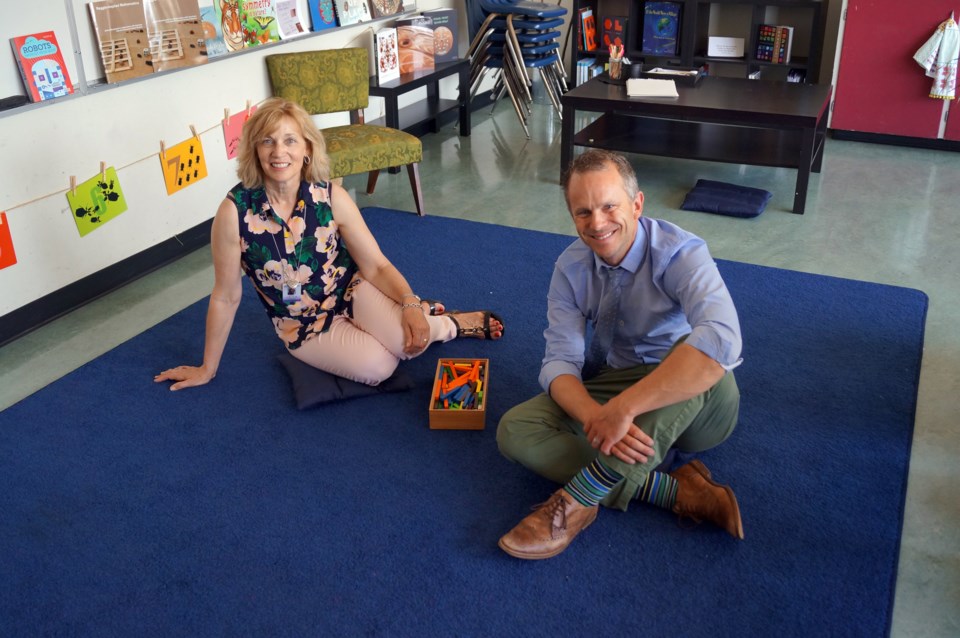If you took a time machine back to 1948 and stepped inside Grauer elementary school, what would you find? Your answer may be a lot of chalk and school desks and chairs.
Now, consider how those desks and chairs may have been arranged. It’s likely you’ll picture orderly rows upon rows of desks, however well-designed for an illicit network of note passing.
Then consider where you would picture the teacher. Either behind their desk or in front of the chalkboard, spouting orders and direction.
Fast-forward nearly seven decades and enter the “pop-up” classroom of teacher consultants Janice Novakowski and Marie Thom.
In this classroom, sometimes referred to as a studio, the chairs are stacked in the corner, almost a distant memory. And there are no individual desks. And learning tools, toys and books are spread out in “stations.”
It’s a new classroom model designed to foster the school district’s new teaching curriculum, which fosters student-led learning and is in full-gear this year.
“There’s lots of room for creativity, for problem-solving, for thinking outside the box. So we’re really looking at our redesigned curriculum and asking, how can we show teachers what our new curriculum can look like in a new classroom setting?” explained Thom.
This specific classroom has been set up with a focus on mathematics where students can roam. The open-ended design has materials that can be shared by all grades. The consultants host sessions for teachers; run demo lessons with students, for teachers to observe; bring parent groups in to learn about the new ideas being explored; and host other consultants from other districts.
The “pop-up” classroom is at Grauer because principal Andrew Ferguson had the extra space. Otherwise, Thom and Novakowski would have had to continue their “travelling roadshow,” packing up materials from school to school, explained Ferguson.
“We now have the opportunity to have our students come in and test drive a few of their activities,” said Ferguson.
“What I’m seeing as a principal is a trickle out effect where the classrooms across the hall or up the stairs are now starting to be somewhat similar to what’s happening here. Teachers are clearing out some space, bringing down the volume of visual distractions, they’re wanting storage with easy access.”
The key is to allow students to explore subjects in a way that’s conducive to their learning appetite. Furthermore, teachers are able to cross-pollinate subjects. For instance, students could learn mathematical patterns by counting points on a pinecone. That pinecone may be picked up in a park during a nature walk for science class. Kids may then paint said pinecone for an art project.
“Children learn in multiple ways and we’re providing multiple opportunities and entry points for them,” said Thom, who stresses a “full body experience.”
“I think all kids need to manipulate stuff. The stuff then goes into the brain. The old way is you watch the teacher do something on the board, and then you try it. There was a lot of teacher-directed learning. Here, there’s definitely teacher guidance . . . but there will be multiple ways for kids to respond to them.”
This story appeared in the June 2017 EdCom edition, a Richmond School District-led initiative in conjunction with the Richmond News.



